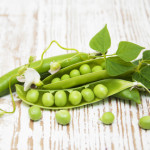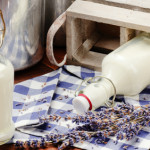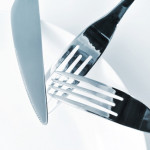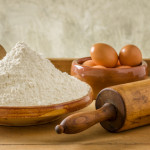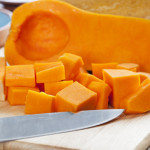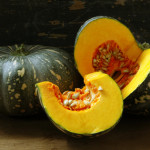Peas
There are several types of fresh peas, all of which are available nearly year round these days, but they are at their peak during the spring and early summer months. Like corn, the natural sugar in peas converts quickly to starch, so make sure to buy peas fresh, store them in the refrigerator, and use them within a day or two.
English shell peas are the familiar round green pea. Frozen tiny tender green peas, while enjoyable and convenient throughout the winter months, bear little resemblance to the texture and bright flavor of fresh peas. The springtime ritual of shelling peas is just as satisfying as shucking summer corn, and their flavor and texture are worth every minute.
When shopping for English peas, look for bright green smooth, succulent pods filled with evenly plump, round seeds. The freshness of the pods is an indication of the freshness of the peas. For the most reliable test, pop open a pod and taste a pea. Fresh peas should taste sweet and grassy. A pound of English shell peas in their pods yields about 2 cups of shelled peas, which translates into 2 to 3 servings.
Both sugar snaps and snow peas are edible pod peas. There is no shelling required. As their name implies, sugar snaps are delightfully sweet. Sugar snaps are delicious raw, but their flavor is enhanced with a brief cooking. As with all other peas, look for bright, smooth, succulent, tender green pods with fresh looking stems.
Happy Spring!
“Work With What You Got!”
© Victoria Hart Glavin Tiny New York Kitchen
Drinking From Bottles, Cans, And Brown Paper Bags!
For as long as beverages have been available in disposable containers, etiquette books have advised people not to drink out of cartons, bottles, and cans. The only exception to this rule was the consumption of beer and soda at outdoor picnics or barbecues, where suitable glasses might not be available.
Nowadays, however, you can buy everything from green tea to chocolate soy milk in packages made from glass, plastic, paper, and aluminum – or a variety of combinations. Convenient little juice boxes come with their own plastic straws, and sports drinks come in wide-mouth containers for easy gulping. People even wear water bottles with designer labels, like handbags as they traipse through the mall.
Drinking directly from bottles or cans might be the most convenient option on the tennis court or on the go, but when it comes to serving beverages in your home, drinks should be drunk from a glass, never a can or bottle. And definitely not from the milk carton.
“Work With What You Got!”
© Victoria Hart Glavin Tiny New York Kitchen
Perplexing Foodstuffs
There are those foods that can be rather difficult to figure out how to eat without looking like you were born in a cave. Here are some useful tips for properly eating perplexing foodstuffs.
Artichokes
Pluck off artichoke leaves and scrape the tender part (not the prickly point) between your teeth (preferably after dipping in melted butter). Work your way to the delicate inner leaves, and then use a knife to cut off the remaining small leaves and feathery innards. Cut the artichoke “heart” into bite-sized pieces and eat with a fork.
Asparagus
Eat asparagus with your fingers if served raw as crudités. Eat with a fork and knife if served with dinner.
Bread
Break bread into bite-sized pieces, and butter it or dip it into olive oil just one piece at a time.
Crab (Soft-Shelled)
Eat entire crab, including shell, either in sandwich form or using a fork and knife. Remove inedible pieces from your mouth with a fork.
Fajitas
Place meats, vegetables, and other fillings on a flat tortilla. Roll up and use your fingers to eat fajitas from one end.
Fondue
Spear bread, vegetables, or fruit with a fondue spear and dip into cheese or sauce. Remove food from spear using a dinner fork, and eat from a plate. DO NOT double dip. Spear uncooked meat cubes and place spear into fondue broth or sauce. When cooked, transfer meat to a plate using a dinner fork and cut into smaller pieces to eat.
Lobster
Wear a lobster bib to avoid fishy splatters, Crack shells with shellfish crackers and extract meat with a small fork or pick. Cut larger pieces with a knife, and eat with a fork after dipping in melted butter. Clean your hands by dipping fingers into finger bowls, and use lemon (if provided) to cut extra grease. Dry your hands with your napkin.
Peas
Use a knife to push peas onto a fork. Do not mash peas before eating, or eat peas from a knife.
Raw Shellfish
Use a small fork to extract mussels, clams, or oysters from the half-shell. Season with fresh lemon or cocktail sauce. In informal settings, you may quietly slurp shellfish from shells.
Soup
Using a soup spoon, spoon soup away from your body and then quietly sip from side of spoon. Tilt bowl away from you to spoon up remaining drops.
Spaghetti
Twirl pasta with fork tines into bite-sized portions, and allow any dangling pieces to fall back onto your fork. You may also rest fork tines against the bowl of a spoon while you twirl pasta.
Steamers
Extract clam from shell using a small fork, and use a fork and knife to remove inedible neck. In informal settings, it is permissible to use fingers.
“Work With What You Got!”
© Victoria Hart Glavin Tiny New York Kitchen
If you have many occasions to use a rolling pin then you really should have different sizes and different shapes of rolling pins on hand. Sometimes a very long, thick, and heavy one will be best. For other dough you will want a smaller, lighter one. The French style, which is extra long, narrow, and tapered at both ends, is especially good for rolling dough into a round shape, as for a pie crust, while the straight-sided rolling pin is better for an oblong shape.
If you’re unfortunate enough to be without any rolling pin at all, other things will do a decent job. Try a straight-sided bottle, tall jar, or a drinking glass.
"Work With What You Got!"
© Victoria Hart Glavin Tiny New York Kitchen
Keep Squash Fresh
A whole squash can be stored in a cool, dry place for up to a month. Once peeled and cubed, it will stay fresh in the refrigerator for up to one week in an airtight container. Once peeled and cubed, don’t keep it any longer than a week in an airtight container in the fridge. If flesh had dark or mush spots, it’s time to throw it away.
Be Careful Prepping!
Squash can be pretty darned slippery when sliced raw, so if you’re apprehensive about removing the skin, prick the skin and roast whole. Otherwise, you can slice the squash in half and scoop out the seeds before cooking. To cube raw squash, cut a slice off the bottom so that it rests flat on your cutting board before removing the skin with a paring knife or vegetable peeler.

